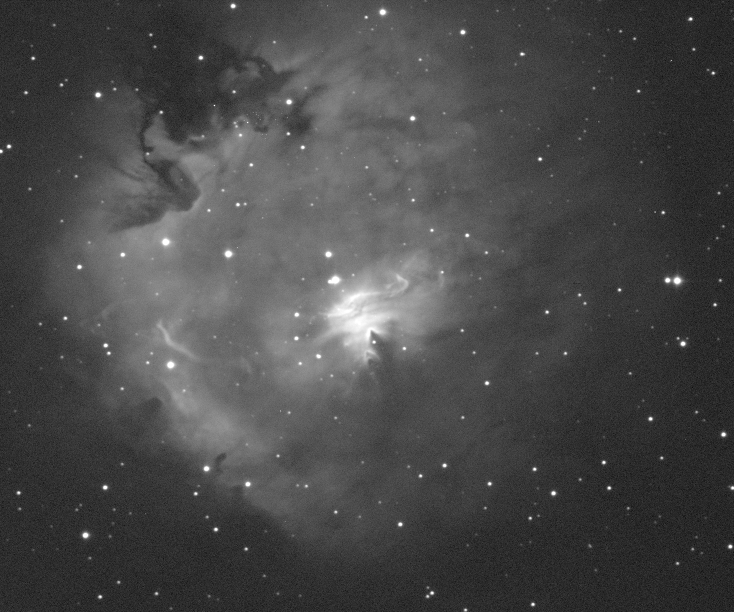At the end of January, the WorldWide Telescope (WWT) team at Microsoft Research released tools to convert images into the WWT's native TOAST format.
I've used these tools to move seven of the Milky Way Explorer sky images into WWT, as well as an overlay view that identifies many of the objects visible in these images.
The link for this is at the end of this blog entry, but first some explanation.
In my initial review of the WorldWide Telescope I praised the basic software but criticised the limited survey data available for it. This has improved somewhat since then. In particular, the spectacular Spitzer infrared survey of the inner galaxy is now available through the WWT.
Nevertheless, many important surveys are still not available through the WWT, including the MSX infrared survey of the full galactic plane and many radio surveys.
The public WWT tools currently require the full image to be loaded into memory before it is TOASTed, preventing me from migrating larger surveys such as the full MSX A-band, which is currently available through the Milky Way Explorer. So for now I have created a low resolution version of this survey for the WWT.
I've also created a WWT version of the composite false-colour Effelsberg/Parkes radio survey of the galactic plane (described in the sources section of the description of the Milky Way Explorer) which reveals many interesting objects including supernova remnants not visible at other frequencies.
The WWT includes an IRAS infrared colour composite image. However, this image is very dark, which highlights bright objects in the galactic plane, but obscures infrared cirrus clouds elsewhere. I've created WWT versions of my "dark" and "bright" IRAS images, both of which are much brighter than the standard WWT image.
I've created WWT images of my false colour CO and hydrogen-alpha maps. Both of these data sets are already available through the WWT, but in a more limited colour range.
I've included my favourite image, which is a mountains-in-the-sky heightmap with the height determined by the Effelsberg/Parkes galactic plane radio intensity and the colour determined by the IRAS survey data.
The overlay image completes the set. This includes white ellipses showing the boundaries of OB associations, yellow circles showing the boundaries of ionising clusters, and pink, violet and blue balls showing, respectively, the locations of Wolf-Rayet, O-class and B-class ionising stars. Avedisova star formation regions are identified as yellow splotches, and supernova remnants as blue-green splotches. The sources for all this data are given in the Sources section of the description of the Milky Way Explorer.
By now I expect that you are impatiently waiting for the WTML link, but just a few more points before I give it:
- Many of these surveys are for the galactic plane only and the WWT starts up elsewhere (Pisces, apparently, at least for me). So you may need to move your view to see anything.
- I'm currently storing this data on my own server, which, unlike the Microsoft WWT server, is not a superfast system. So you may need to wait several minutes for the images to finish loading. Fortunately, they should be cached on your own hard drive during subsequent visits.
- The WWT does not appear to have a marker system, or at least none that has been publicly announced that I am aware of. However, there is a hack that is almost as good if you don't mind editing one of the WWT files. In:
C:\Documents and Settings\Your Username\Local Settings\Application Data\Microsoft\WorldWideTelescope\data\places
find the file:
Stars.xml
Open this in a text editor, and after the line:
<dataset name="Common Named Stars" Groups="State" type="place">
add the line:
<file name="Overlay Objects" url="http://socnet.bz/wtml/toast/overlay.txt" Browseable="False">Overlay Objects</file>
This will add several thousand annotations for ionising stars, supernova remnants and Avedisova star formation regions to WWT and works well with the overlay view in particular.
-
One of the greatest strengths of the WWT is its ability to overlay foreground and background images. For example, you can set the Overlay to the foreground and use any other image (one of mine or another one) as the background. You can cross fade in between them. I find it especially interesting to cross fade in between the CO view that shows molecular clouds and the radio/IRAS heightmap image.
-
The MSX image is off by a few pixels, which is slightly noticeable if you cross fade it with another image. I'll fix that when I am able to TOAST the full MSX survey.
Without further ado, if you click on this WTML link, you should be able to view the data in WWT.

